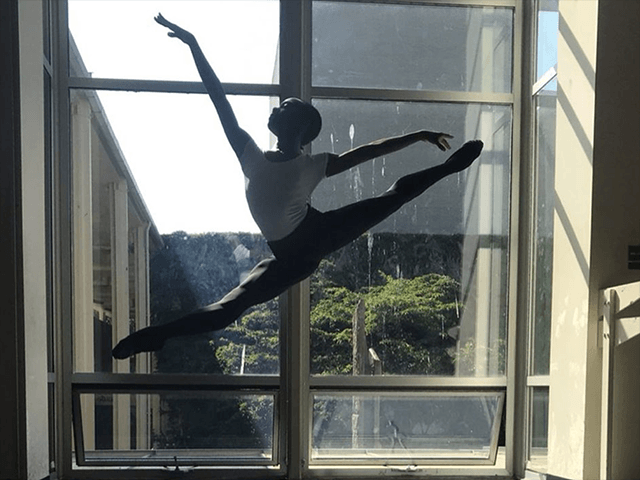An 18-year-old male ballet dancer is turning centuries-old tradition on its head by donning en pointe shoes to dance in roles until now reserved for women.
Ashton Edwards will be the first male dancer to study en pointe at the prestigious Pacific Northwest Ballet (PNB).
Edwards, who moved to Seattle from Flint, Michigan, said in a KIRO 7 News interview that his journey started a year ago when he told his parents he is homosexual and then going farther in describing his sexuality:
He’s since discovered that he identifies with other groups too.
“He him/ she her/ they them,” Edwards said. “I haven’t hanged any labels yet but I’m still learning.”
Challenging personal boundaries translated to him pushing the limits of another love – ballet. “I kind of had this self-realization I could do more and I didn’t want to limit myself in any way,” Edwards said.
“There will be a moment when someone like Ashton is dancing en pointe in a role that audiences haven’t seen before and it will be a first. It will be a door opener and I would imagine – I would hope – that we would flood through that door,” Peter Boal, the artistic director at the PNB and director of its affiliated school, said in the local report.
Taxpayer-funded National Public Radio (NPR) reported Edwards’ “leap through the air is pure art”:
Classical ballet has long embraced stereotypical ideas about masculinity and femininity. Dances were often based on fairy tales with princesses and princes. There are the rare men who dance women’s roles, such as the ugly stepsisters in Cinderella and the Les Ballets Trockadero de Monte Carlo, an all-male drag troupe.
Ballet itself is evolving. Choreographers are restaging classical ballets and incorporating modern dance techniques. They are embracing diversity, especially in terms of color, in order to be relevant as well as to attract a younger audience.
It’s more accepted now for ballerinas, who were valued for their long, thin bodies and ability to pirouette, to display greater athleticism. For that reason, many professional female dancers now take men’s dance classes for strength training and to improve their jumps. Male dancers are discovering the benefit of learning the more refined movements traditionally taught in the women’s classes.
“It’s really exciting to see choreographers nowadays blurring the lines of gender binary and sexuality,” Edwards said. “We see men dancing with men and women dancing with women. And it doesn’t always have to be a love connection. It can just be a partnership.”
Follow Penny Starr on Twitter or send news tips to pstarr@breitbart.com

COMMENTS
Please let us know if you're having issues with commenting.